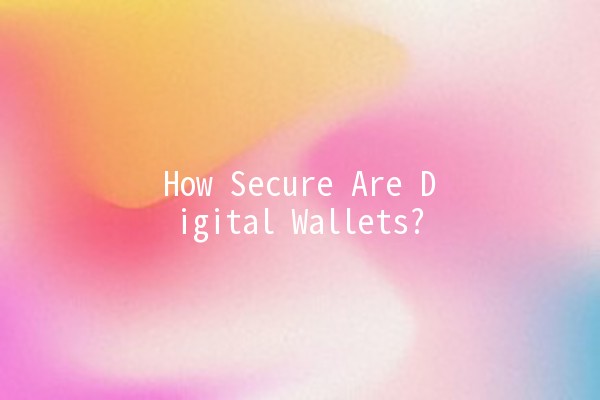




In recent years, the use of digital wallets has surged, thanks to the convenience they offer for online and inperson transactions. However, with their growing popularity, concerns about security have also increased. Are digital wallets safe? This article will explore the various aspects of digital wallet security and provide practical tips to help you stay secure while using them.
A digital wallet, also known as an ewallet, is a software application that allows users to store and manage their payment information and passwords for numerous payment methods and websites. Digital wallets can securely store credit or debit card information, making it easier for users to make purchases without having to enter their card information every time.

While digital wallets offer numerous advantages, they are not without risks. Understanding these risks is crucial for making informed decisions about using a digital wallet.
One of the most significant risks associated with digital wallets is hacking. Cybercriminals can exploit vulnerabilities in wallet applications or phishing attempts to gain access to sensitive information.
Example: In 2020, a prominent ewallet company reported a data breach that exposed thousands of users' personal information, leading to financial losses for many users.
If your mobile device is lost or stolen, there is a risk of unauthorized access to your wallet if it's not properly secured.
Example: A user loses their phone and, without twofactor authentication (2FA), a thief can access their digital wallet and potentially drain their account.
Using a digital wallet over an unsecured network, such as public WiFi, can expose users to maninthemiddle attacks.
Example: An attacker on the same public network can intercept data exchanges, obtaining login credentials or sensitive transaction information.
To protect your digital wallet and ensure a secure experience, consider the following tips:
Explanation: Twofactor authentication adds an additional layer of security by requiring a second form of identification alongside your password.
Application: Activate 2FA on your digital wallet app and any associated email accounts. For example, use Google Authenticator or Authy for generating timebased onetime passwords (TOTP).
Explanation: A strong password helps protect your digital wallet from unauthorized access.
Application: Create a password that combines uppercase and lowercase letters, numbers, and special characters. For example, instead of using "password123," consider a stronger alternative like "MyP@ssw0rd!88". Avoid reusing passwords across different accounts.
Explanation: Public WiFi networks are often unsecured, making it easier for hackers to eavesdrop.
Application: Avoid making transactions or accessing your digital wallet while on public WiFi. If necessary, use a virtual private network (VPN) to encrypt your connection.
Explanation: Keeping track of your transactions can help you identify any unauthorized activity.
Application: Set up alerts for any transactions made with your digital wallet, or regularly log in to check for any suspicious activity. If you notice something amiss, take immediate action to secure your account.
Explanation: Software updates often include security patches that protect against vulnerabilities.
Application: Regularly update your digital wallet app, your phone’s operating system, and any other apps associated with financial transactions. Enable automatic updates whenever possible.
Digital wallets can be more secure than traditional credit cards because they often use tokenization, which substitutes sensitive card information with a unique identifier that is worthless if intercepted. However, the security of your digital wallet ultimately depends on how you manage your account and device.
If you suspect that your digital wallet has been compromised, immediately change your password and enable 2FA if you haven't done so. Reach out to your wallet provider for assistance and monitor your transactions for any unauthorized activity.
Many digital wallet providers offer buyer protection policies that may help recover lost funds due to unauthorized transactions. However, the process varies between providers, and you may need to report the incident within a specific time frame.
While keeping your payment information in one place can be convenient, it increases your risk exposure. Consider using multiple digital wallets for different purposes, or storing only essential payment methods in your main wallet.
When selecting a digital wallet, prioritize features such as encryption, biometric logins (fingerprint or facial recognition), 2FA, and a solid reputation for security among users and independent reviews.
Keep your smartphone up to date with the latest security patches, avoid downloading apps from unknown sources, and install mobile security software to scan for potential threats. Furthermore, always use a secure lock screen method (PIN, password, or biometric lock).
Digital wallets offer convenience and ease of use for managing finances and making transactions. While they present some security challenges, taking proactive steps can significantly enhance your security and minimize risks. By implementing strong passwords, enabling twofactor authentication, and staying aware of your digital financial habits, you can enjoy the benefits of digital wallets while safeguarding your financial information.